Subscribing to Science
On the globe- and time-spanning journals of the Othmer Library collection.
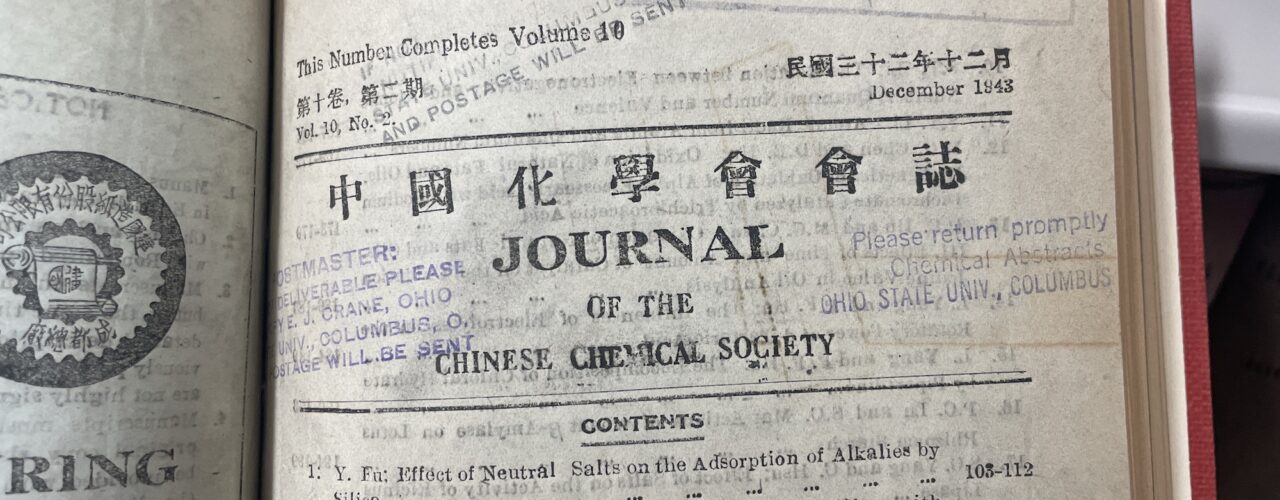
On the globe- and time-spanning journals of the Othmer Library collection.
Journal, periodical, serial, even magazine: these are a few of the names of publications that arrive in our mailbox on a regular (and sometimes irregular) basis. Journals usually focus on one subject, which can be either broad or very niche. I find them to be especially fascinating sources of information, thoughts, and events over years or at a single moment in time. Prior to the internet, journals allowed scientists and businesspeople to distribute and receive information quickly, especially when compared to the lengthier timelines of book publication.
Scientific journals were first published in the 1660s, starting with Journal des Scavans by Denis de Sallo in Paris, followed closely by Philosophical Transactions in England. It wasn’t long before scientific journals were published all over Europe. Annales de Chimie, launched in 1789, was the first journal to focus exclusively on chemistry. As scientific knowledge grew, so did the publication of journals, which now number in the tens of thousands. These are on top of newsletters, bulletins, and annual reports.

The Othmer Library started its collection with the books and journals of the Chemists’ Club of New York. Founded in 1898, the group planned on opening a library from the start. To acquire volumes, they relied on both purchases and donations, much like we still do today. Some of the Club’s founding collection donors included members such as Dr. Charles Chandler and Dr. Morris Loeb, and related societies like the New York Section of the Society of Chemical Industry.
In the first couple of years, the American Chemical Society moved its book and journal collection to the Chemists’ Club. The librarians arranged to receive deposits of the journals that were used to create Chemical Abstracts, a significant source of information on chemistry research since 1907. Such deposits were especially crucial during the economic depression of the 1930s when the Club had to cancel many of its own paid subscriptions. Most of the Club’s items were moved to the Othmer Library in the late 1980s and we have continued to add to our collection since.
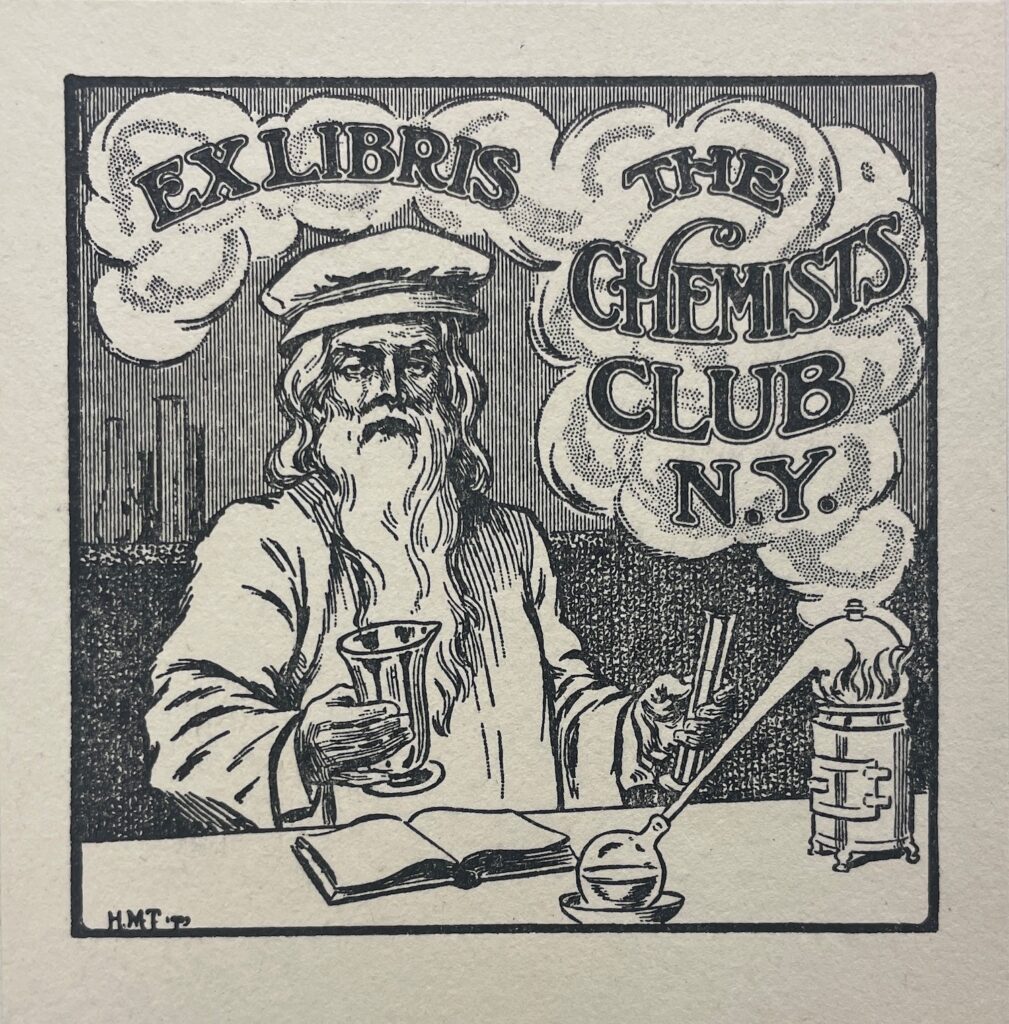
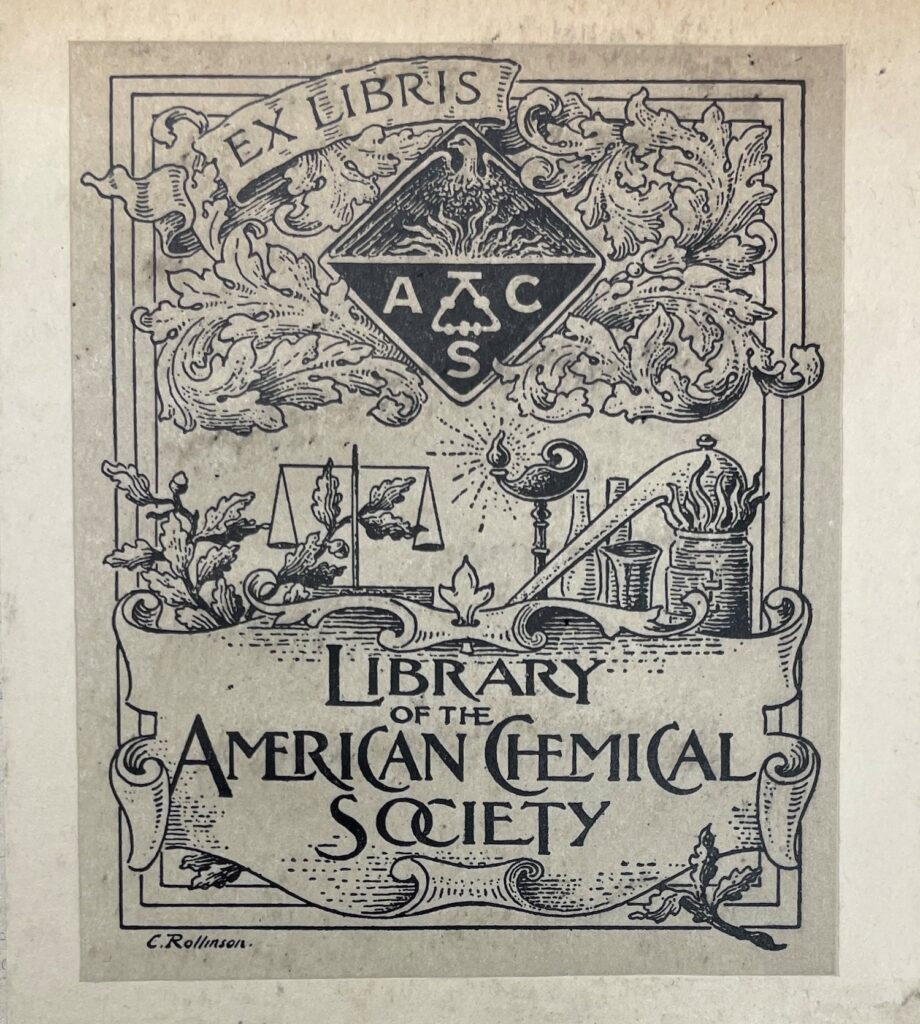
Left: The Chemists’ Club bookplate; right: the American Chemical Society bookplate.
The Othmer Library’s journal collection speaks to the varied fields that made up the chemical sciences throughout the 20th century. So while you won’t usually find the most recent science journals as you would in a modern chemistry library, you will find journals that cover all historical aspects of chemistry and chemical engineering. Topics covered include pure and applied chemistry as well as industries that utilize chemical knowledge in the development and manufacture of goods such as paint, paper, perfumery, cosmetics, ceramics, brewing, food science, pharmaceuticals, agriculture, and many more.
We have about 4,800 serial titles that include over 47,000 individual bound volumes. The international scope was originally built up through the Chemists’ Club’s relationship with Chemical Abstracts. Today our library holds 944 non-English language titles, including journals in German, Spanish, Russian, Polish, Japanese, Croatian, Chinese, and other languages. We also hold a number of journals published abroad but in English, as many of our journals from India were. Chemical Abstracts seemed to be especially successful at collecting during or immediately after World War II, so there are only a few gaps of international journals from that period.

Most helpful to some of our researchers are hard-to-find trade journals, newsletters, bulletins, and annual reports, which are ephemeral and not held by many other libraries. In fact, our librarians have added 118 new bibliographic records for periodicals to OCLC (a shared international library database); these are items that might not exist in any other library.
The physical aspect of the journals can sometimes provide information about more than scientific practices. For example, a change in size or paper quality, or gaps in publication, can indicate difficult economic circumstances or military conflict. Some contain bookplates and stamps of former owners and libraries; sometimes you’ll find an editorial note slipped inside. One Chinese journal has an editorial note about losing the original typescripts during the Battle of Peiping-Tianjin.

Another journal of German origin, Kunststoffe, has a notice printed at the top of the title page stating it has been reproduced for “public interest” by the United States Office of Alien Property Custodian.
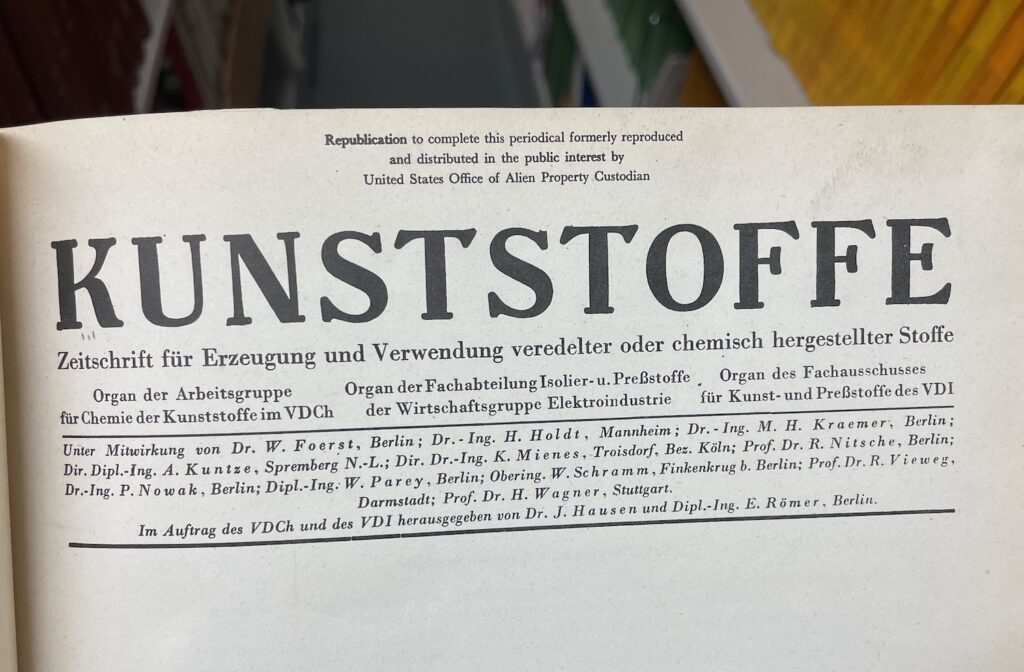
Some journals also include tipped-in items like fabric samples, graphs, or photomechanical prints.
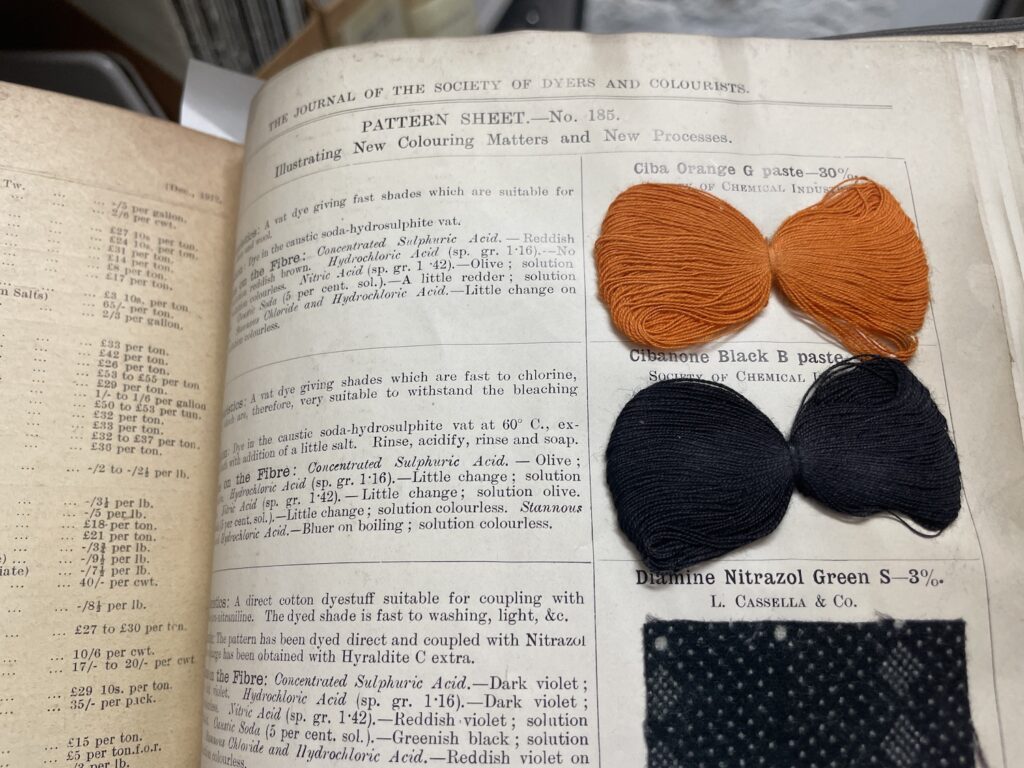
There are also journals with fascinating advertisements aimed at scientists, businessmen, and engineers.

The Othmer Library’s journals are the backbone of our modern collection. We can learn so much from them or just have fun flipping through them for vintage advertisements.
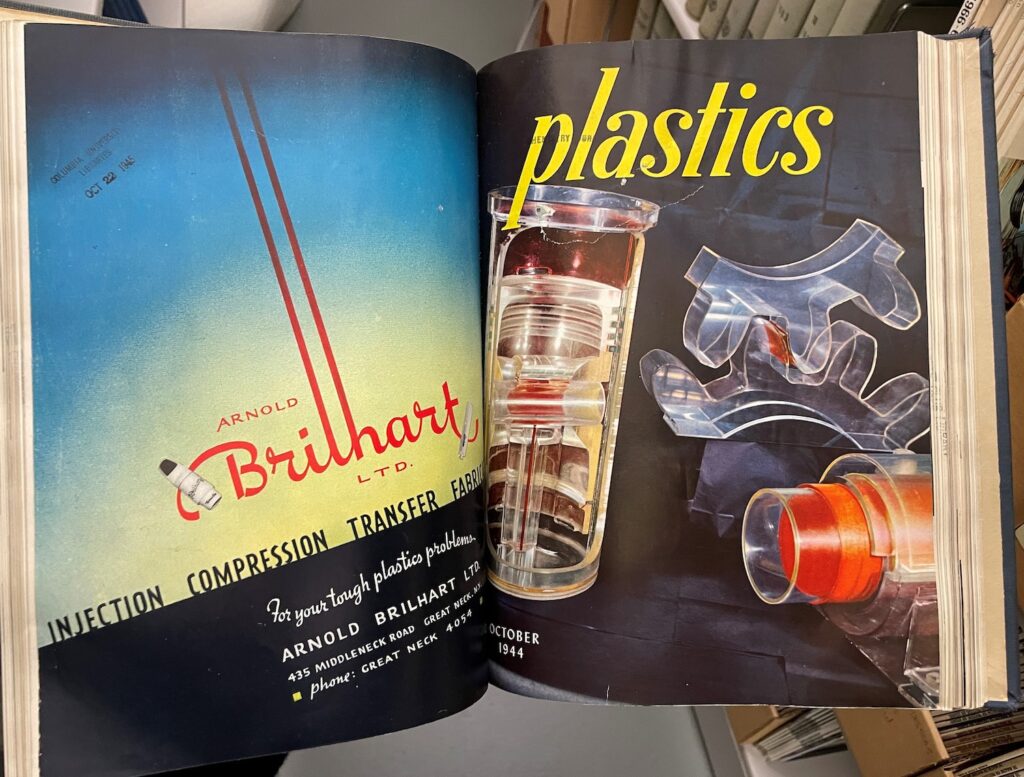
Whatever your interest, we welcome you to search our catalog and contact us about using our journal collection.
In pursuit of something memorable and meaningless.
How does a museum and library negotiate biography, civics, and the history of science?
Searching for the cats hiding in our collections.
Copy the above HTML to republish this content. We have formatted the material to follow our guidelines, which include our credit requirements. Please review our full list of guidelines for more information. By republishing this content, you agree to our republication requirements.